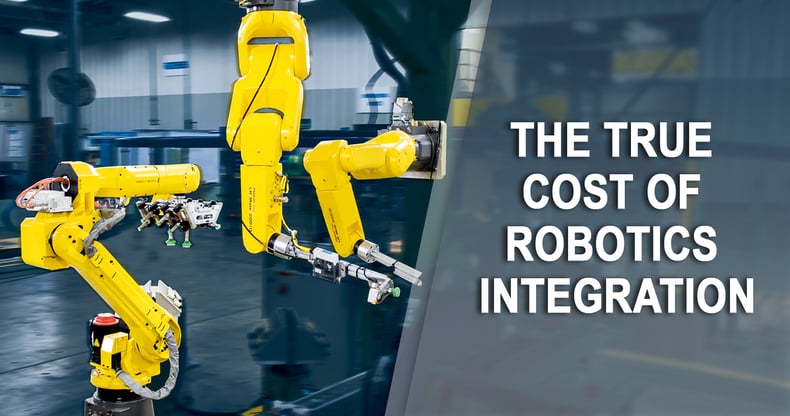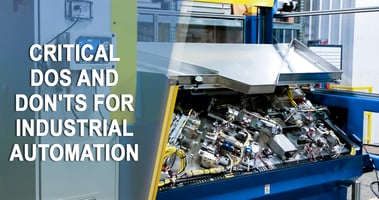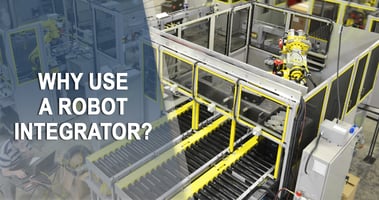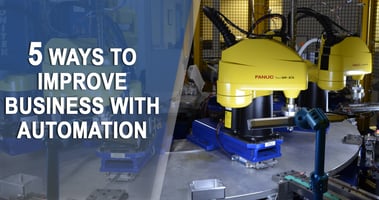As consumers evolve, so do their expectations for manufactured goods. This evolution—among other...
How to Determine the True Cost of Robotics Integration at Your Organization

Throughout the process of researching robotics integration for your manufacturing organization, there’s apt to be a concentrated focus on the financial component. Every operation has its own budgetary constraints, so it’s only natural to be concerned about cost. What many manufacturers might not understand, however, is the complete breadth of information involved in determining the true, or total, cost.
As you think about the plan for leveraging one or more industrial robots at your facility, it makes sense to assess the expense of the machinery itself. But that is just one element of a much larger system and integration process; this isolated price tag does not comprehensively reflect the host of factors affecting the total cost of ownership.
A full robotics integration requires additional expenses that you may not have examined before. And the decisions your organization makes around the purchase, integration and implementation effort will affect any long-term cost savings you can expect to garner from benefits like increased efficiency and accuracy as well as minimized downtime and maintenance.
To help you clarify the true cost of a robotics integration at your organization, here are some expert insights about the associated metrics and considerations.
What Does “True Cost” Really Mean?
The term “true cost” implies an absence of unexpected expenses and uncalculated investment factors. With regard to a robotics integration, you can define “true cost” as the total cost of ownership.
So while the initial investment price for a robotics solution may make up the majority of the total cost, it is not by any means the complete picture. You would also need to explore items such as:
- Operating expenses
- Throughput
- Productivity
- Labor requirements
- Training
- Safety risks
- Maintenance
- Downtime
These are some of the most critical factors involved in determining your total cost of ownership over the long term.
What Specific Metrics Do You Need to Apply?
Given that the true cost of ownership entails a great deal more than your company’s initial investment price, you have the challenge of collecting all the necessary metrics to make an accurate calculation. So, what metrics, specifically, do you need to incorporate in order to determine the true cost of your robotics integration?
Here is an informative breakdown:
- Labor Reduction: With the right robotics solution, your organization will require less manpower for its operations. Therefore, your total cost of ownership should include the overall savings in labor reduction that the integration is designed to achieve.
- Quality Improvements: With the precision of an automated process, you reap the benefit of increased quality and accuracy. As a result, you’re positioned to produce less scrap or waste, which is another important measure of cost savings.
- Ergonomic Savings: Another advantage of robotics integration is the decrease in human interaction and the minimized safety risks. Therefore, you’ll want to account for the monetary savings associated with workplace injury, including workers’ compensation, increased insurance premiums and potential compliance fines.
- Worker Retention: There are certainly some unfavorable, unsafe jobs involved in the manufacturing process, ones for which retention is a major expense. By allowing the automation to perform these types of tasks and leaving the less risky or demanding responsibilities for your workforce, you foster a more amenable work environment. Happier employees generally equates to less turnover, which leads to a more lucrative bottom line.
- Machine Utilization: In some ways, machines are more consistent and reliable than human workers. When human employees do not show up for work, management costs go up and utilization goes down. Production numbers also tend to drop as workers become tired, whereas a robotics solution has the ability to maintain consistency throughout any shift, from beginning to end. This means your line is set to run more efficiently and without the need to replace equipment as frequently. Typical automated cells feature approximately 85% utilization—the industry standard, but we’ve often seen them achieve greater than 95%.
- Service: Of course, service costs need to be factored into your overall decision. Finding a stable, long-term integration partner (as opposed to a startup) is important because you want to be sure they’ll still be around 10+ years from now.
How Are the Calculations Made?
The truth is calculating the total cost of ownership for a robotics integration is a unique exercise for each organization, grounded in the metrics outlined above. As such, you need to know your operation and its numbers intimately.
The labor reduction calculation is pretty straightforward, based largely on your number of operators and their salary/pay. But for quality improvements, each company has its own scrap rates. And the calculation for ergonomic savings will depend on your particular machinery and the nature of the work. For worker retention, the cost analysis will be affected by issues like whether you use a placement agency or an internal HR department.
When it comes to machine utilization, the calculation is predicated more on your investment, If, for example, you’re running at max 70% capacity and the customer wants you to add 20%, do you need to buy a new machine? Expand the facility? Or simply leverage automation to become more productive/efficient?
Keep in mind that design life differs between manufacturers. FANUC targets an industry-leading design life of 15 years. They also have a Service for Life™ Guarantee, which assures that they’ll support the product until it’s no longer running. In fact, they have products they’ve been supporting for 30 years. Other collaborative robots have a design life closer to 5 years (less than half of FANUC’s). The initial price point appears far lower, but the difference in lifespan means the total ownership cost will be higher overall.
This is the type of acute knowledge and information you’ll need in order to make an accurate assessment of your robotics integration’s true cost of ownership.
Forging Forward Based on the Numbers
As you work through the research and pull all of your numbers together, it will be vital to avoid putting too much weight on the upfront investment cost. Instead, consider the total cost and benefit of ownership.
You are going to have this equipment for quite a few years to come, and with a successful integration, there’s great potential for maximized productivity as well as minimized time and waste. From faster production capabilities to decreased maintenance costs, there is much that will impact your overall number over the long term.
So be sure to recognize this reality and leverage it when making robotics equipment and integration decisions that will inevitably affect your organization in terms of cumulative profitability.
If you’re interested in learning more about how to embrace the kind of approach to your robotics systems integration that reaps major value for your manufacturing company, check out our free tip sheet now.



